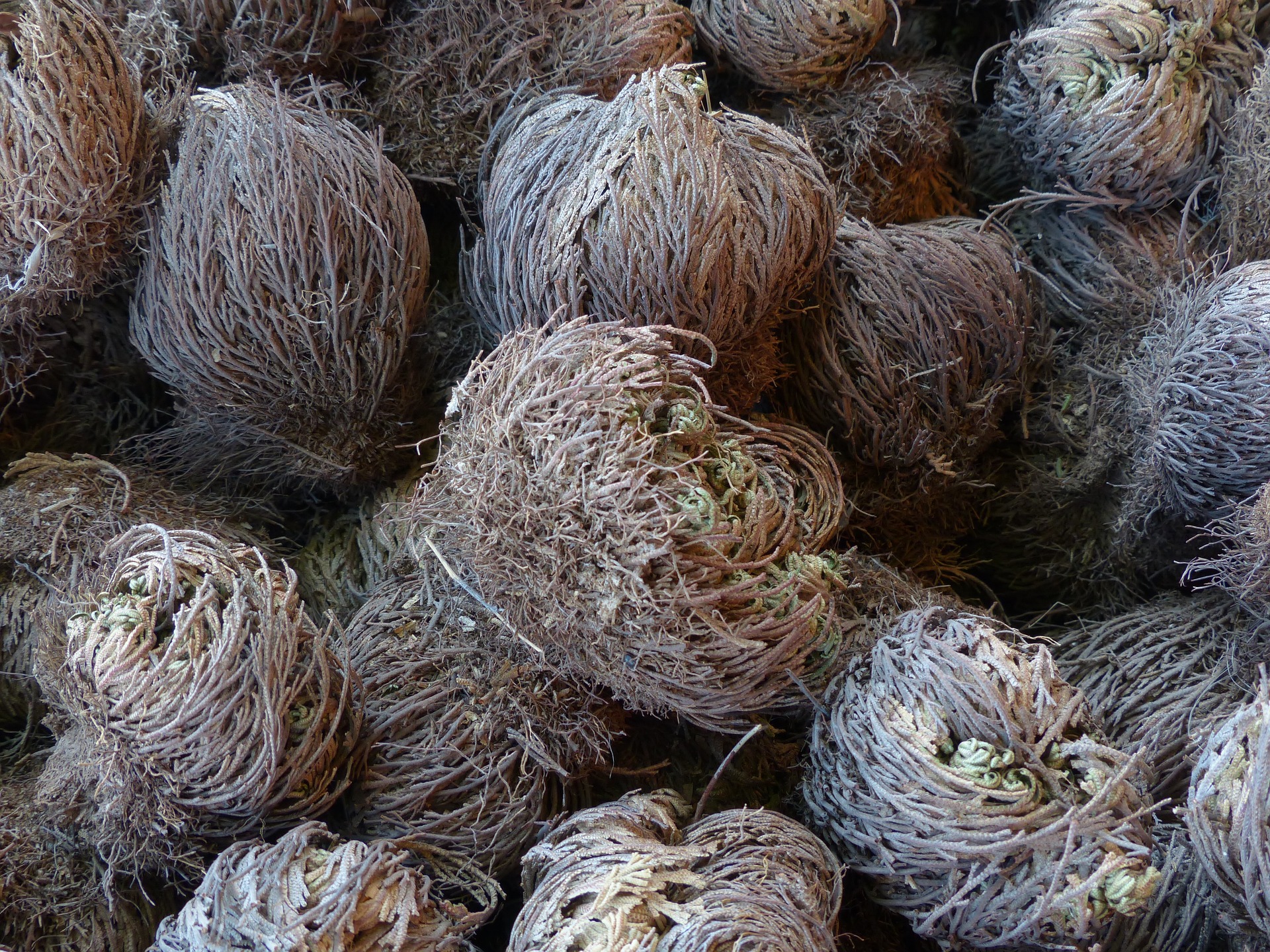Resurrection plants are a true miracle of nature. They comprise a group of plants that survive even if they can’t find water for months or years at a time. Many kinds of resurrection plants exist worldwide, including Selaginella lepidophylla from North America and the Oprheus flower (Haberlea rhodopensis) from Europe.
Resurrection plants are also found in Africa. Erikan Baluku, who is soon finishing his MSc in Molecular and Cell Biology at the University of Cape Town, studied one such resurrection plant, Eragrostis nindensis. On top of his graduate work, he currently serves as an Ambassador Coordinator at SynBio Africa and Global Biotech Ambassador to Africa. Since 2020, he has aided in mapping the biotech ecosystem and engaged with several stakeholders from academia to African biotech startups, all to help the African bioeconomy grow.
Read on below to hear more about the cool work that Erikan has been doing with the resurrection plant. You’ll hear about metabolomics, stress responses, and more through my interview with Erikan. Perhaps you’ll find the seeds of studying plants growing inside you through this interview!
PN: What is the resurrection plant, and why is it called that?
Erikan: Before I begin, I’d like to bring up something my supervisor, Professor Jill Farrant, wrote in her diary about the resurrection plant as far back as 1970: “The ded [sic] plant on the rocks was alive but Dad wouldn’t believe me.” That one entry inspired her to study resurrection plants from her undergraduate all the way to her doctorate thesis. As the head of the Plant Stress Lab Group at the University of Cape Town, Jill studies resurrection plants all over the world, making her a leader in resurrection plant research. You can see her TED talk about these plants here.
Resurrection plants are unique and amazing. They can lose up to 95% of the water stored in their cells yet survive for months to years in a desiccated state. Give them water, and they can resume normal physiology as if nothing happened. What makes them so interesting is their two unique survival mechanisms. They can either dismantle their photosynthetic capabilities and reassemble them upon rehydration or keep their photosynthetic processes dormant while desiccated.
PN: Plants that survive without water? That’s so fascinating! What did you learn from your research about how E. nindensis survives during a drought?
Erikan: We know that E. nindensis simply stops its photosynthetic apparatus to overcome drought stress. It does this by disintegrating the thylakoid membrane, shutting down its metabolism. This allows the plant to conserve energy and reduce water loss. While a lot of ‘omics research has been done on most resurrection plants, it had yet to be done on E. nindensis.
I showed through my metabolomics work that some metabolites are upregulated during desiccation. Some of these metabolites include proline, serine, and histidine. My work also found other metabolites associated with membrane stability, scavenging of reactive oxygen species (ROS), signalling molecules, and protein protection that protected the plant from dehydration. By using ‘omics, I was able to help uncover more secrets about how resurrection plants alter their chemical makeup to stay dormant for a long time.
PN: You must have faced challenges while you were studying the resurrection plant with metabolomics. What were they?
Erikan: All metabolomics research needs a gas or a liquid chromatography-mass spectrometer (GC/LC-MS). We use a GC-MS to obtain a broad profile of metabolites in plant samples but to also search for specific metabolites of interest. In both cases, I faced challenges trying to develop the best methods for extracting metabolites from the resurrection plant. First, different resurrection plants have differences in tissue composition that affects how I extract the metabolites. The same applies to root and leaf samples. The differences in metabolite extraction protocols make it harder to compare results between samples.
PN: Was database selection also another issue you encountered during your metabolomics research?
Erikan: Not as much, actually. I used the Fiehn library and conducted MassHunter Qualitative analysis to obtain peak areas. Peak areas provide researchers with a way to measure how much of a molecule is present within a sample. We then needed a way to know how the metabolite profiles differed between the samples. To that end, I used Metaboanalyst to group samples by metabolite composition and heatmaps to identify differentially abundant metabolites.
PN: With droughts happening more often in recent years, how does your research into resurrection plants help with environmental sustainability efforts?
Erikan: Most resurrection plants are close relatives to native plants in Africa. The resurrection grass I am studying for my MSc is a close relative of the African crop Eragrostis tef (Teff), yet Teff does not survive extreme drought. In understanding how E. nindensis continues to survive with through, there is potential for making Teff more drought-tolerant. Similar advances could be made for the other plants as well.
Research on resurrection plants can also aid sustainability efforts. From this, much can be done to enhance agriculture and restore biodiversity:
- Developing drought-resistant crops: By studying the mechanisms that allow resurrection plants to survive prolonged droughts, scientists can identify genes and proteins that could be used to develop crops more resistant to water scarcity. This could help reduce crop losses due to drought, which is a major threat to food security in many parts of the world.
- Restoring degraded land: Resurrection plants are able to survive in harsh, arid environments where other vegetation cannot. By using these plants to establish vegetation in degraded or desertified areas, it may be possible to restore these ecosystems and prevent further desertification.
- Reducing water usage in agriculture: If crops can be developed that are more resistant to drought, it may be possible to reduce water usage in agriculture. This is important because agriculture is a major consumer of freshwater, and water scarcity is becoming an increasingly pressing environmental issue.
Overall, the unique adaptations of resurrection plants have the potential to contribute to efforts to address climate change and promote environmental sustainability, particularly in regions where water scarcity is a significant issue.
Author
-

Paul Naphtali is a seasoned online marketing consultant. He brings to the table three years of online marketing and copywriting experience within the life sciences industry. His MSc and PhD experience also provides him with the acumen to understand complex literature and translate it to any audience. This way, he can fulfill his passion for sharing the beauty of biomedical research and inspiring action from his readers.
View all posts




